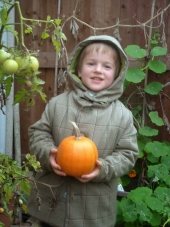posted 9 years ago
Here is some info that I found:
Root Vegetables
Root crops do well in Zone 3. The seeds of radishes, beets, kohlrabi and turnips all grow quickly and can be planted more than once in a Zone 3 growing season. These seeds, as well as those of carrots and rutabaga, will still be thriving in the cool fall weather. Leeks grown from seed can be harvested in a short period of time if you do not mind a smaller size. Parsnips are slow to germinate and usually take 100 to 120 days before harvest, but parsnips still do well in Zone 3.
Green Vegetables
There are some fast-growing green vegetable seeds as well as cool weather loving green vegetable seeds that perform well in Zone 3. The seeds of snap peas and pole beans germinate quickly and produce well in Zone 3. The seeds of garden cress produce in 12 short days. The seeds of spinach, chard, parsley, cilantro and basil also are quick to produce a crop. The seeds of radicchio, collards, kale and escarole grow well in cool fall weather.
Invasive plants are Earth's way of insisting we notice her medicines. Stephen Herrod Buhner
Everyone learns what works by learning what doesn't work. Stephen Herrod Buhner






